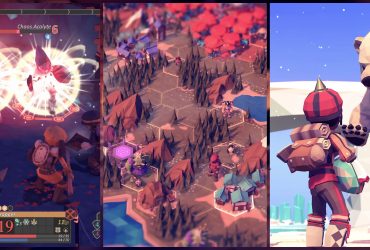Few images are more iconic in the science fiction genre than the vast deserts of the planet Arrakis, rich with spice and teeming with massive sandworms. The franchise even gets its title, Dune, from the planet’s nickname. And yet, in the upcoming HBO series Dune: Prophecy, Arrakis barely features at all. Most of the action takes place on other planets: the headquarters of the Bene Gesserit Sisterhood, the rich and lustrously decorated Corrino homeworld, and the frigid home of the exiled Harkonnen family. However, Dune: Prophecy keeps Arrakis relevant by tying it deeply into the plot and emphasizing its constantly looming presence, the necessity of spice, and the terrifying destructive nature of sandworms.
Game Rant spoke to producer, writer, and showrunner Alison Schapker, who discussed the challenge of creating a story in the Dune universe that doesn’t take place on the iconic planet. The result is that Dune: Prophecy is extremely visually and tonally distinct from Denis Villeneuve’s Dune films, which rarely leave Arrakis – but viewers are never allowed to forget the grip that one tiny desert planet has over the entire Imperium.

Related
Dune: Prophecy May Fill the Game of Thrones Void
Dune: Prophecy is showing all the signs of being the next Game of Thrones-like TV show viewers can immerse themselves in.
Spice Is Everywhere, So Arrakis Is Everywhere
Discussing the decision to have few scenes actually set on Arrakis, Schapker explained that the planet didn’t have to physically appear to remain relevant. “That’s the great thing about spice and Arrakis,” Schapker said, “It exerts its power on the whole Imperium because nothing runs without it.” Even 10,000 years before the events of Frank Herbert’s original Dune novels, melange, aka “spice,” is a massively valuable substance due to its role in making space travel possible, unlocking precognitive abilities in humans, and simply providing a psychedelic experience unlike any other drug.
Although the characters rarely visit Arrakis, spice is consistently present in the series. Younger, wild characters like Constantine Corrino (Josh Heuston) and his sister Ynez (Sarah-Sophie Boussnina) are shown indulging in spice as a small act of rebellion against their strict societal roles. The Bene Gesserit use spice to unlock the abilities of novices and Reverend Mothers alike. And, of course, House Harkonnen’s desire to monopolize the spice trade can be seen thousands of years before Baron Vladimir Harkonnen took the reins.
One Small Planet Has So Much Political Importance
Every decision Emperor Javicco Corrino (Mark Strong) and his wife Empress Natalya (Jodhi May) make in Dune: Prophecy, from which houses to negotiate with to who will marry Princess Ynez, is influenced by concerns about Arrakis and its valuable spice. Describing Arrakis’ role in the political situation, Schapker said:
“[Arrakis] is a place of the people’s imaginations, and I think there’s a lot of projection onto it, fears of it, and mythologizing of it. We wanted to both be haunted by the story of Arrakis, as well as allow the sort of real political and economic force of Arrakis to be part of the story, as it would be, even if you were not on Arrakis. It shapes life in the Imperium in such a profound way.”
It may not be seen often, but Arrakis is everywhere. A soldier returning from the front is forever changed by his experiences on the desert planet. Bene Gesserit novices are haunted by nightmares of Shai-Hulud, the all-devouring sandworms. House Richese uses Arrakis as a bargaining chip in its dealings with the Emperor, while House Harkonnen covets it from the shadows. Although Dune: Prophecy rarely takes viewers to the sand-covered wilderness of the iconic planet, they are reminded in every scene and episode that this is truly a Dune story, and everything in the Imperium boils down to one key truth: the spice must always flow.















Leave a Reply